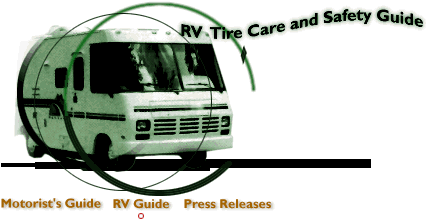
 |
The most important factors in tire care are maintaining proper inflation pressures, avoiding excess loading, inspecting tires regularly and driving with care at appropriate speeds.
|
 |
Check your tires' air pressures at least once a month, before each trip, and each morning you drive during a trip. Inflation pressures should be checked when tires are "cold," that is, before they have been driven one mile. Heat generated during driving increases air pressure above the proper cold inflation pressure. This is normal, so never "bleed" air from a hot tire, since this could result in dangerous underinflation. It may be difficult to check the air pressures of inside tires in dual fitments. (A dual fitment is two tires on the same side of an axle.) However, it is important that these air pressures be maintained because the inside dual tires are subjected to high heat exposure (from brakes), lower air circulation and crowned road surfaces (which can cause inside dual tires to support more of the load than the outside dual tires). Make sure all tire valves and extensions are equipped with valve caps to keep out dirt and moisture. Installing a new valve assembly is good practice whenever a tire is replaced. You can order the Tire Industry Safety Council's RV Tire Safety Kit which contains an air pressure gauge.
The Tire Industry Safety Council recently placed a billboard in suburban Washington, DC extolling the importance of tire inflation. |
|
|